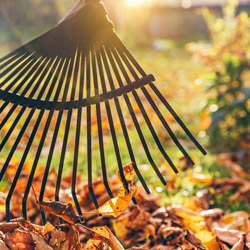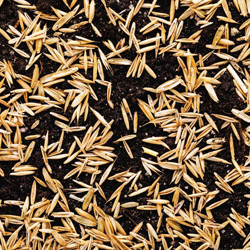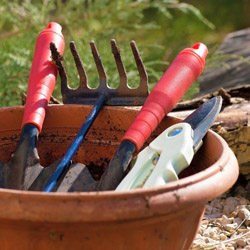Winter doesn’t have to be a harsh season for your landscape, no matter what delicate plants or new plantings you may have. We are fortunate that we can plant year-round. Fall and winter provide opportunity for planting leaf and root vegetables and cole crops. Also bring some color with Cyclamen, Pansies, Violas, and others. We have a great variety available.
In addition to planting your cool-weather vegetables and annuals, it is time to prepare your landscape for the cold temperatures and rain of winter. With the proper preparation, your landscape can not only survive the damages of winter but will be ready to thrive in spring.
14 Landscaping Tasks to Prepare for Winter
The exact tasks necessary to prepare your landscape for winter will depend on the maturity of plants, how delicate they may be, and the overall design of your landscape. The best ways to prepare for winter include…
- Taking Notes – Before your landscape goes completely dormant in late autumn, take notes on what you enjoyed and what might need improvement for next year. These notes can help you plan any changes over the winter months so you’re ready and excited for spring.
- Caring for the Lawn – Your lawn will continue to grow through the winter, but at a much slower rate. Be sure to fertilize with Winterizer to maintain nutritional requirements through the winter. Also, depending on our rainfall consider shutting off or reducing the frequency of your irrigation.
- Raking – This basic autumn chore will keep debris from building up on your lawn where it could smother grass and foster fungus growth over the winter. Use a leaf vacuum or sturdy rake for the best results, while using a narrow shrub rake to get leaves from underneath hedges.
- Aerating and Dethatching – If your soil gets compacted through summer’s activities, aerating and dethatching in fall will help the landscape relax and rejuvenate over the winter. This will also ensure that moisture and air are able to circulate to plant roots.
- Overseeding the Lawn – Thin or bare patches in the lawn can easily be overseeded in autumn, then covered with straw to protect the new grass as it gets established. This will also keep weeds from invading bare patches over the winter.
- Fertilizing – Fertilizing should be part of your winter landscape preparation. A good feeding will help encourage root growth and stability, and a slow-release fertilizer will stay in the soil to be ready for use as soon as temperatures warm up in the spring.
- Weeding – Weeding before winter arrives will ensure fewer weeds last through the cold season to take over in spring. Use sturdy hand tools to be sure and get tap roots and all parts of weeds so they cannot return when the weather warms.
- Collecting Seeds – If you have favorite annuals, consider collecting a few seeds from the spent plants and store them in paper envelopes in a cool, dry place to replant next spring. Taking pictures of annuals is another way to be sure you can recreate your favorite flowerbeds.
- Pruning – Once plants are dormant, it is time to prune away any dead, damaged, or diseased branches and to cut back perennials. Shaping ornamental shrubs is also best done in fall.
- Collecting Fruit – If fruit trees are focal points in your landscape, collect any unfallen fruit or windfall droppings. This will minimize the risk of leftover fruit harboring pests that may damage or infest the tree when spring arrives.
- Mulching – Applying a 2-3-inch layer of mulch around trees and shrubs will help protect root temperatures in winter and will minimize erosion from winter runoff. Mulch flowerbeds as well to protect the roots of newly planted or delicate perennials.
- Protecting from Frost – Minimize moisture loss from frost-tender plants through the winter by applying Wilt Stop to the foliage or cover with plant blanket like N-Sulate. This will protect the leaves, preventing them drying out and turning brown in the harsh winter winds.
- Watering – If it is a particularly dry fall, continue watering your landscape even as the temperatures drop, so long as the ground is not yet frozen. This will help the plants avoid dehydration stress and will keep roots more insulated and protected in winter, this is particularly important for evergreens.
- Applying Dormant Spray – Between the months of November and February, deciduous fruit trees should be spray monthly with a dormant spray consisting of copper fungicide and mineral oil. This will prevent fungus and pests from overwintering. Especially important for peaches and nectarines to prevent Peach Leaf Curl.





